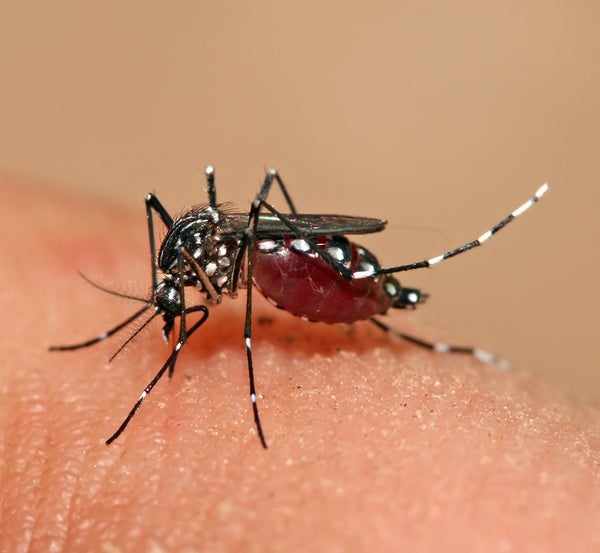This article was published in Scientific American’s former blog network and reflects the views of the author, not necessarily those of Scientific American
As the number of reported cases of the Zika virus rises in the United States, many Americans, including some men and women most at risk, do not understand details about the virus such as how it is transmitted or its health consequences. However, there is growing concern among the public about Zika, and many Americans are taking steps to protect themselves from the virus, according to our recent nationally representative survey conducted by March of Dimes and NORC at the University of Chicago.
Public knowledge about Zika has changed little since The Associated Press-NORC Center for Public Affairs Research’sMarch survey. The data reveal high level understanding, but significant information gaps when it comes to details about the transmission and health consequences of Zika. For example, more than 9 in 10 Americans correctly state that a person can be infected if bitten by a mosquito carrying the virus, and 8 in 10 are aware that Zika is linked to birth defects in babies born to infected mothers. However, fewer know that Zika can be spread through sex (58 percent), that someone can be infected with Zika but show no symptoms at all (33 percent), or that there is a test for the virus (48 percent).
The March of Dimes and NORC at the University of Chicago conducted the survey of 2,379 adults in August 2016 to assess Americans awareness and knowledge of Zika as well as their attitudes toward the government response to the virus. The survey included oversamples of men and women ages 18-40 years old in order to measure the knowledge and attitudes of this key population in their childbearing years.
On supporting science journalism
If you're enjoying this article, consider supporting our award-winning journalism by subscribing. By purchasing a subscription you are helping to ensure the future of impactful stories about the discoveries and ideas shaping our world today.
At the time of the survey, the Centers for Disease Control and Prevention (CDC) reported about 16,000 cases of the virus in the United States and its territories. Most of the reported cases were people who acquired the virus from mosquitos in Puerto Rico, but a couple of dozen people had also acquired the virus from mosquitos in southern Florida.
The poll shows Americans lack confidence in the federal government to respond to a Zika outbreak, and there is significant bipartisan support for government to take further action to combat the virus. Three-quarters of Americans favor increased federal funding into research to prevent the spread of Zika, and majorities support mosquito control policies.
With all the media attention about the virus, there has been an increase in both public awareness and concern about Zika. Almost all Americans (95%) say they have heard at least a little about Zika, and awareness of the virus has increased since March. Moreover, 61 percent of Americans are moderately worried that the country will see a large number of Zika infections in the next year, up from 52 percent in March.
Despite the rising awareness and concern, the poll shows that the public health community needs to continue to work to provide Americans with information about the virus. Most Americans (85 percent) have received information about Zika from television or radio news, but few (39 percent) trust that source. Although Americans are most trusting of Zika information from the CDC, their personal doctor, and their state or local public health departments, few have received information from these sources. The poll finds there are opportunities for healthcare providers to step up efforts to reach out to pregnant women about the virus: only one quarter of women who are pregnant or trying and their partners report that a healthcare provider has talked with them about Zika.
In particular, there is need for public information targeted toward adults who are the greatest risk for the pregnancy-related impacts of Zika, those ages 18 to 40. The age gap in knowledge has diminished since March and younger adults are now no less likely than older adults to be aware that Zika can be transmitted by sexual intercourse. However, this important population of younger adults in their childbearing years still has key gaps in knowledge, including less understanding than older Americans of recommendations to consider delaying pregnancy in certain circumstances and greater misperceptions about the safety of use of insect repellent with DEET by pregnant women.
The poll shows most people are not sure about the symptoms and treatments for the virus, but Americans say they are taking steps to protect themselves from Zika by removing standing water (53 percent), applying insect repellent (49 percent), and closing windows or putting up screens (47 percent). About 1 in 10 Americans age 18-40 report personally changing their plans in regards to pregnancy due to Zika, and women and their partners who are pregnant or trying to get pregnant are more likely than other adults to worry about Zika.
Complete analysis of this survey and all of the topline survey data are available on the NORC web site. The poll illustrates changes in public perceptions of the virus overtime, and tracking Americans’ understanding of Zika will be critical as information about the virus continues to advance.
